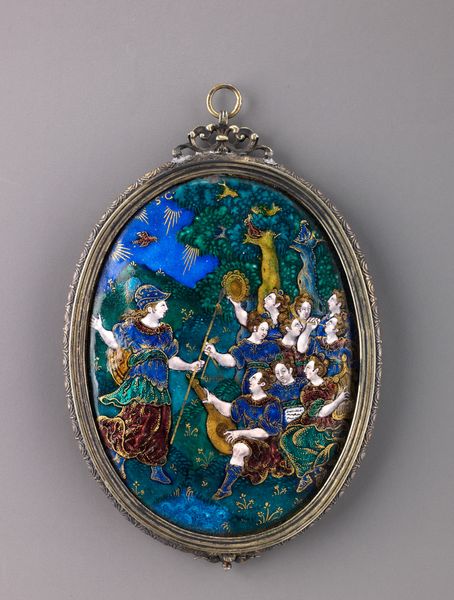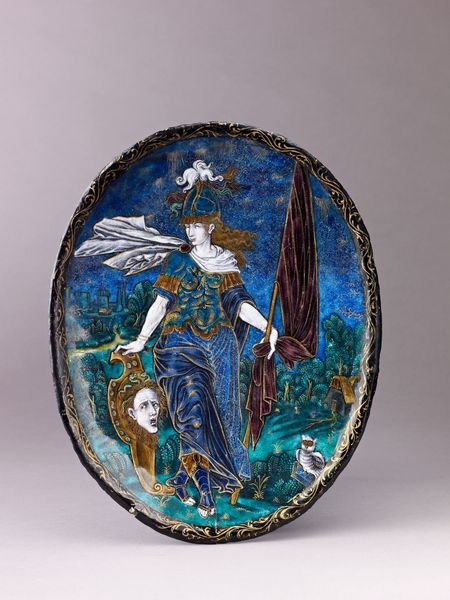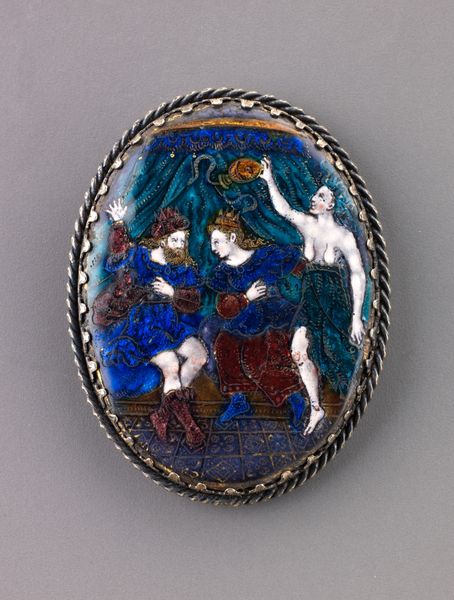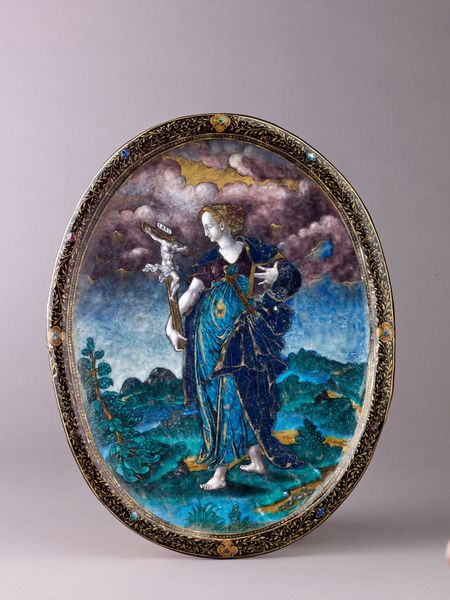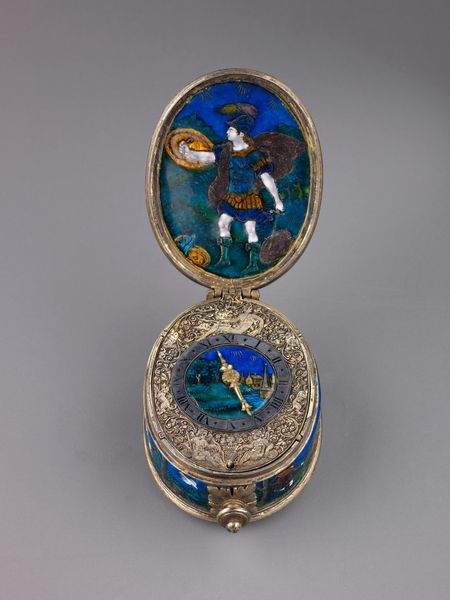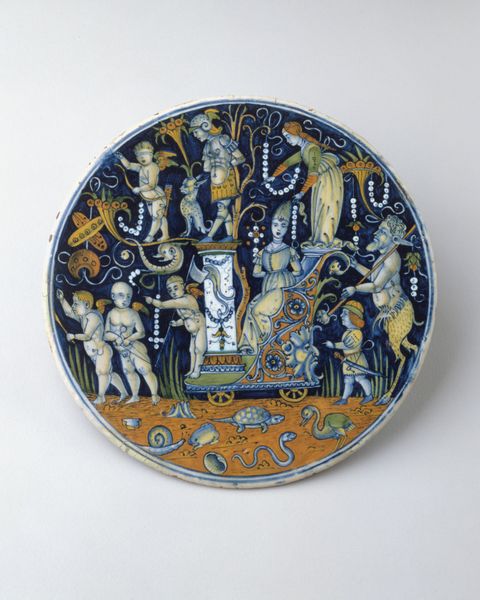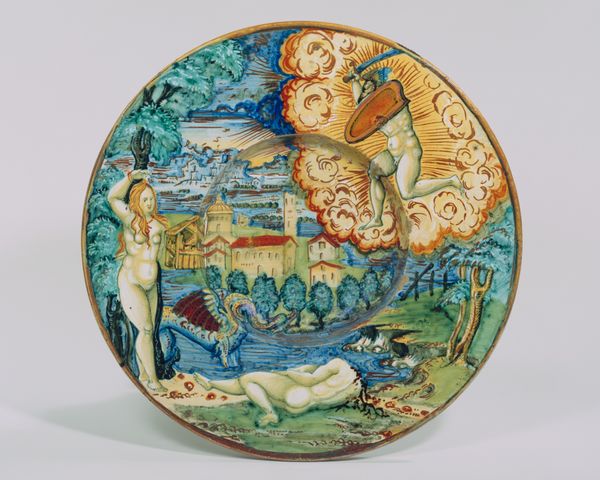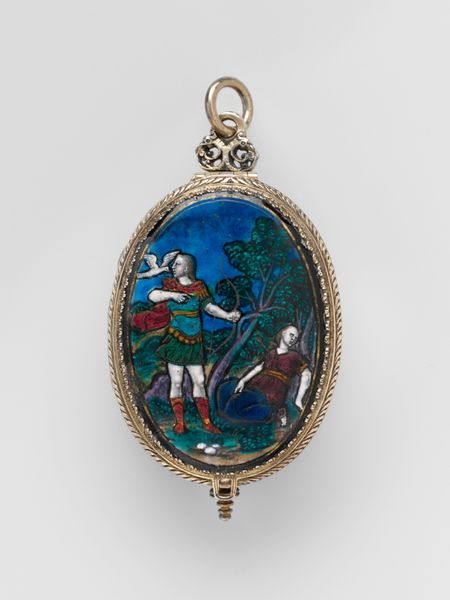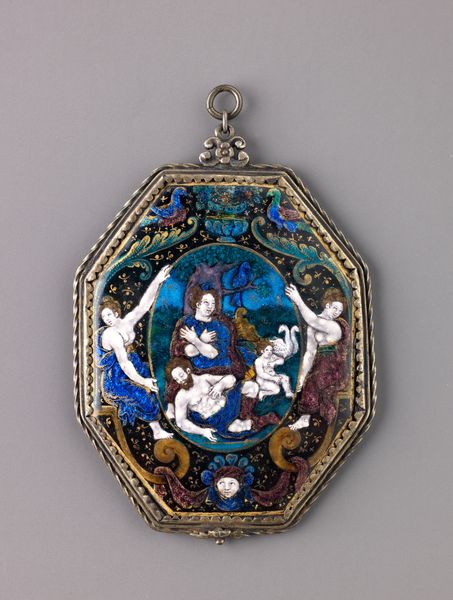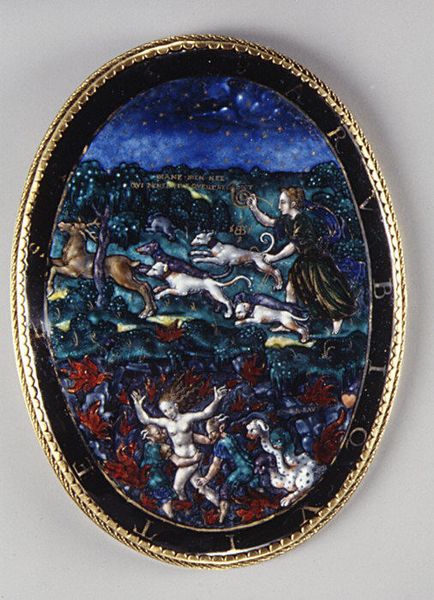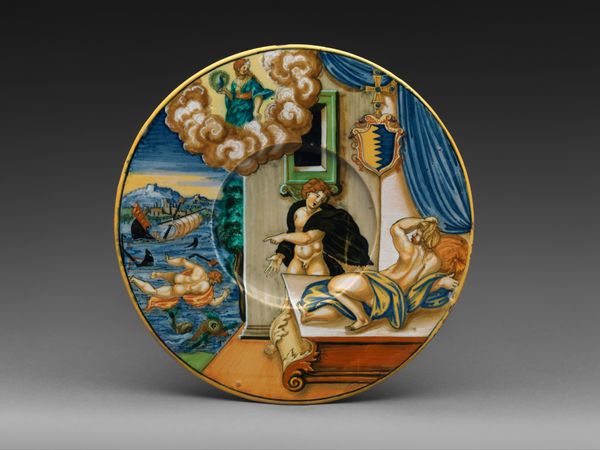
silver, sculpture, enamel
#
silver
#
allegory
#
mannerism
#
sculptural image
#
sculpture
#
enamel
#
horse
#
history-painting
#
nude
#
decorative art
Dimensions: H. 5.5 cm, w. 4 cm, d..7 cm
Copyright: Public Domain
Editor: So, this is the watchcase cover, *Perseus and Andromeda*, made of silver and enamel between 1612 and 1628 by Jean II Reymond. It’s such a tiny sculpture, but the scene is quite dramatic with the nude figure chained to the rock and the hero arriving on horseback. What do you see in this piece, looking at it with today’s eyes? Curator: I see a potent allegory reflecting the societal constraints placed upon women, even within a mythological context. Andromeda, as the vulnerable nude figure, represents female oppression, rendered powerless and offered as sacrifice. Consider her helplessness within a patriarchal structure and the male gaze inherent in the artistic depiction. Editor: Right, she is waiting for her salvation, by Perseus, or she'll just die. It is odd how beautiful her form is given the predicament! Is the history behind the sculpture reflected in the artistry itself? Curator: Indeed. Mannerism, the style of this era, often plays with distorted forms and exaggerated emotion. It perhaps mirrors the twisting and contorting of social norms regarding female agency and expectation. Perseus on his horse is coming to her rescue - in other words, power lies in the hands of the man. Editor: It does seem as though the male is forever her 'rescuer'. Are there other avenues to view it through? Curator: Think about it within a colonial framework. The "monster" could symbolize the fear of the unknown and how societies 'chained' those whom they oppressed; this links to contemporary discussions on othering and systemic inequalities. Also consider whose voices are centered in retelling such narratives; whose stories get amplified? Editor: Wow, it seems incredible so much meaning can be in such a small artwork. Thanks, I’m certainly going to look at this, and other sculptures, from new points of view now. Curator: It's about dismantling accepted readings to reveal how artworks reinforce power structures but can also potentially subvert them with dialogue and debate. It certainly gave me food for thought.
Comments
No comments
Be the first to comment and join the conversation on the ultimate creative platform.


